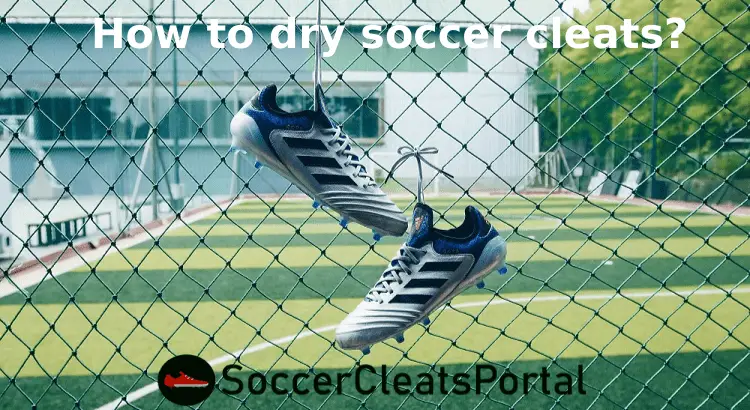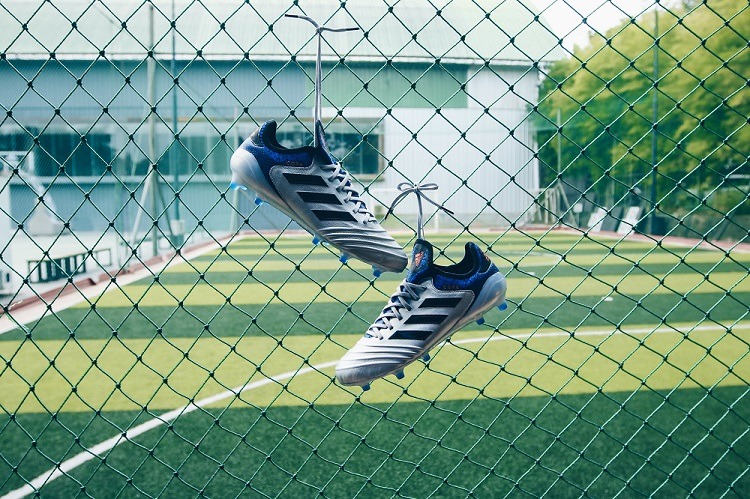Keeping your soccer cleats dry is a must-do habit for any soccer player.
Even if you are playing in wet conditions or after a deep wash of your shoes, they need to dry up before wearing them again.
The importance of drying your soccer cleats
Wet cleats can be the source of many headaches.
For example, moisture could damage your shoes over time and you’d have to buy a new pair much sooner than anticipated. Also if you let them dry in excessive heat, that will suck out all the moisture making them stiff and again more likely to crack.
Excessive moisture inside the shoes is the perfect environment for bacteria. Bacteria are the source of bad smells and if you let them thrive then your shoes are going to smell bad.
Read here some tips on how to get the bad smells out of your soccer cleats.
Wet shoes are also very uncomfortable to play in by putting unnecessary pressure on your feet. So if you want to make the most out of your soccer boots you need to dry them properly.
So, what’s the best way to dry soccer cleats?
How to dry your soccer cleats?
Prepare Your Soccer Cleats for Drying
First off, you should do some simple preparation so that your cleats can dry more efficiently.
In the first step, you need to remove or loosen up the shoelaces. Laces are generally removed when you need your cleats dry as soon as possible, otherwise, you can just loosen them up.
After this, remove the insole if this is possible and set it aside to dry separately. Once you remove the insole, you can wrap it in paper towels to help it dry. You can also put it by the window or a fan to speed up the process.
This entire step is done to let as much air as possible inside the shoe. Shoes will dry faster when there’s air circulating inside. The drying process gets increasingly faster by separating more parts of the cleat from itself.
Cleaning the Dirt
After the first step is done, you can focus on removing the mud and dirt from your soccer cleats. You should remove as much of it as possible while the cleats are still wet. The dirt will be much harder to remove once they are completely dry. Using a damp towel should be enough to wipe off most of it.
You don’t need to worry about adding more water to the already wet shoes by using a wet towel. It won’t make a huge difference if the cleats are already completely wet.
After scrubbing off the mud, you can use a dry cloth to remove any moisture that stayed on the surface. Use it on both the inside and outside of the shoe. This should start up the drying process.
Drying the Cleats
After previous preparations, it’s finally time to jump into drying our cleats.
Firstly, you need to take some newspapers and make paper balls with them. You shouldn’t crumple them too tightly. The paper balls should be made loose to cover a larger surface and collect more moisture from the shoes. If you don’t have any newspapers, you can use towels, napkins, or other small pieces of cloth.
After making these paper balls, you need to stuff your cleats with them. The stuffed newspapers should take the shape of your foot, but be careful not to overdo it. The cleats shouldn’t be filled to the brim with paper. You need to avoid any bulging. Snuggle up the paper so that it doesn’t shrink too much when drying.
If you didn’t completely remove to shoelaces, it’s also a good idea to place one piece of paper between them and the tongue of the shoe.
Put Them in a Good Spot
The next step is to properly place your drying soccer cleats.
The best option is to put them or hang them in a dry spot with some natural breeze. You can also use a fan to create these conditions artificially or to speed up the process. Moisture will get wicked away by the flowing air. Of course, you should avoid any humid spots as that could decrease the drying speed.
A great tip is to use a hairdryer if it has a cool air function. This can give you some extra air circulation and speed up the drying process. However, you mustn’t use any hot settings as those can badly damage your shoes.
After roughly 2 to 3 hours, it’s a good idea to change the newspapers that are inside your soccer cleats. As they absorb moisture, the papers lose a lot of their effectiveness. Throw away the wet ones and put new paper balls inside. This will greatly accelerate the drying process.
What Should Be Avoided?
Some more quick drying options may seem appealing, but you should never resort to them.
Any heating appliances are usually a huge threat to your shoes’ life expectancy. The leather can be damaged and the whole cleat could get bent out of shape. So, what should you avoid?
- Don’t use hot air from the hairdryer.
- Don’t put your cleats in the oven, even at low temperatures.
- Don’t put your cleats in the drying machine.
- Don’t put your cleats in direct sunlight for a prolonged time.
Conclusion
Soccer cleats are extremely sophisticated products made of materials that need to be treated with extra care. The drying process is very important if you want to keep them in good shape. So you need to pay much attention to that.
Also, if you are using your shoes a lot, it always good if you have an extra pair to use if your shoes are getting wet very often.
If you have any other advise on how to dry soccer cleats, feel free to share them in the comment section below.





